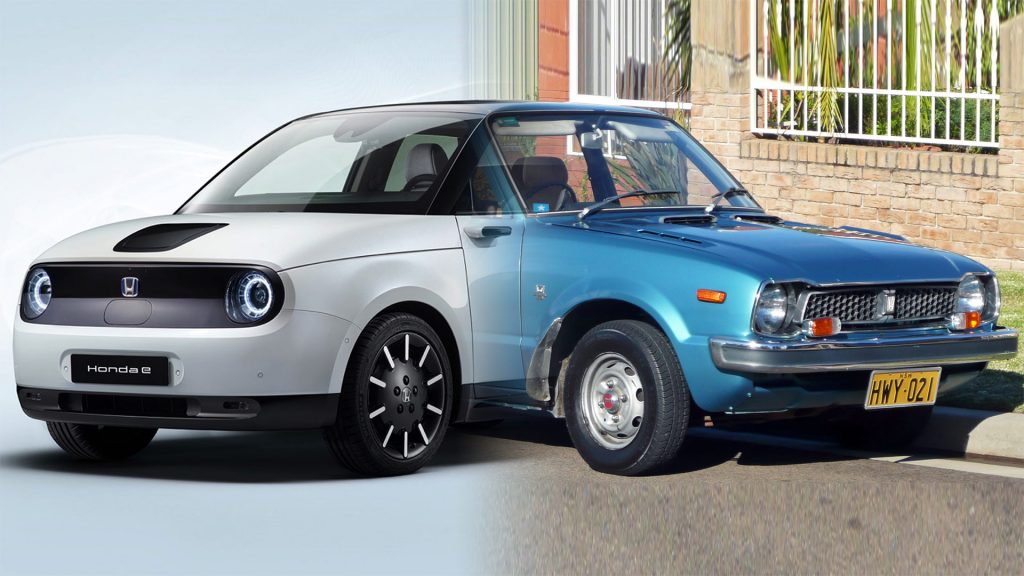A new challenge for the automakers that are in transition to an electric future, beside the technology, is the design of the vehicles. Unfortunately, we are still lightyears away from something as cool and futuristic as what Harrison Ford used to drive in the legendary movie Blade Runner.
So, how can a company attract new customers and convince them to switch from internal combustion engines to battery electric?
The performance and the range, although indisputably important, are not the most important factor when choosing a new vehicle. A buyer first falls in love with the shape of the car and then subsequently inquires about the engine’s performance. Sometimes, a beautiful design is all that it is needed to make a car truly unique. For example, the DeLorean has become an icon thanks to its peculiar look and boxy shape, but it is rather slow and does not even handle corners that well. Nevertheless, it is considered one of the most influential cars of all time.
Now, OEMs are looking for ways to attract new customers to the electric side of the business. Different companies, however, are taking different approaches. On one side of the spectrum, we are seeing manufacturers that are creating unique dedicated EV brands that allow them to be bolder without jeopardizing their place on the market, according to Professor Dale Harrow, Director of the Intelligent Mobility Design Programme at the Royal College of Art.
“The brands, to protect their heritage as they see it, have started these sub-brands like the BMW i car and VW with its ID. series to kind separate them and give them the space to explore some new design languages without affecting their overall brand strategies,” he says.
BMW has created the i brand, Mercedes has EQS, Volkswagen has ID. and Hyundai has Ioniq. All these companies have created a brand within the brand that separates their EV future from their current internal combustion engine present. It would have to be considered a safe space where manufacturers can ease into the EV world without disputing their image and alienating buyers, Harrow explains.
“It's quite an interesting challenge. I think, because the automakers for many years, they've been building their brand language, you know, most of them invested the last 20 years in building a very strong image for that particular brand,” he says. “And so, I think they're quite precious of that. They're not trying to move too fast away from that.”
On the other side of the coin, we are also seeing OEMs being careful but using a very different tactic: nostalgia. Honda has the E, which was inspired by the first generation Civic. Renault has announced the R5, which has the same design of the iconic 5 from the 80s. Meanwhile, the Hyundai Ioniq 5 also has a design reminiscent of the first Korean cars coming onto the American market after the oil crisis in ‘73, such as the Pony.
“They're really referring to their heritage and kind of appealing to people — almost denying the technology. The technology is kind of hidden, to not scare the consumer in a way,” Harrow explains. “So, they're looking at this odd mix, which is kind of traditional and modern coming together.”
The EV world is a tricky land for manufacturers because they have to balance the past and the future. There is a brand image that has been created and crafted through many decades in the business and also there is the necessity to introduce a new technology that will move the brand in a different direction.
In a way, new brands that do not have much history behind them have a certain advantage over established OEMs, at least from the design point of view. They can dare more as they do not have to respect any sort of heritage. That is why Chinese companies have the chance to be bolder in their choices, according to Harrow.
“If you look over to China, you're seeing all these really quite radical solutions coming out way quicker to market,” he says. “Without the history, they have a little more freedom because they're not so hindered by all this kind of brand heritage. In a sense, the brand heritage is a bit of a problem with this new technology.”
European brands must have understood that starting from zero might have its advantages as there is the possibility to innovate and that is why they are creating sub-brands. There is everything to gain and nothing to lose.
The attitude towards vehicles might change too, as they are transitioning from cars to computers on wheels. Therefore, it is unlikely that the design industry will go through extensive cycles like we have seen in the past, such as the muscle car era or the boxy look of the 80s. The periods are going to be briefer and continuously evolving, in a similar fashion to what we have seen with computers and smartphones.
“If you look at car design history, there tends to be a kind of cyclic period. I think what we'll end up with is mini waves, where these vehicles can be much more quickly produced and much more focused,” Harrow points out. “Maybe it’s going to be much more like swapping your phone in terms of the public's attitude towards it.”
Therefore, manufacturers using vintage designs to connect with the public might just be a phase that will disappear in a space of a couple of years, leaving room for other bolder designs. This rather unique ‘mini wave’ might be gone as quickly as it came. Either way, the EV world is challenging for manufacturers not only from a technological point of view but also because it is not easy to find the right design language.
